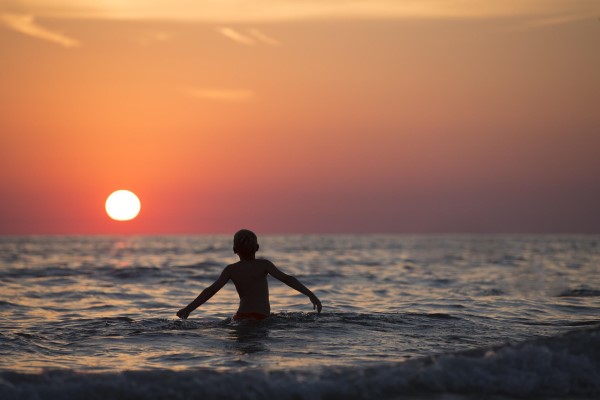MOUNTAIN COMMUNITIES — Despite the dry year, outdoor recreationists who enjoy California rivers and streams should remain aware of dangerously cold, swiftly moving water. Although California’s snowpack is well below normal, snow is melting and filling streams and rivers.
Pacific Gas and Electric Company (PG&E) urges those who venture near or into water to take extra precautions, especially around hydroelectric facilities and dams, where flow conditions can change rapidly. With trout season largely open, anglers also are encouraged to take precautions.
“Safety is PG&E’s most important responsibility. We encourage everyone recreating in or near water to plan at all times how they can quickly and safely escape in case of changing water flows and cold temperatures,” said Jan Nimick, PG&E Vice President of Power Generation.
Most California rivers are fed by snowmelt, making them cold even in summer. Simple actions can save lives, such as recognizing if the water is too cold or swift, knowing your limits, wearing a life jacket or simply by not entering the water when conditions seem unsafe.
Stay out and stay alive, and stay out of canals and flumes
- Recreating in PG&E canals and flumes is strictly prohibited. Stay off of elevated flumes and out of these water conveyances, regardless of who owns them, as they are dangerous due to slippery sides and fast-moving cold water. Be mindful of signs and warnings. Stay out of areas that are posted as restricted, fenced-off or buoy-lined.
Know the risks
- Prevention is the best way to save a person from drowning. By the time a person is struggling in the water, a rescue is extremely unlikely and places the rescuer at risk.
- Sudden immersion in cold water can stimulate the “gasp reflex,” causing an involuntary inhalation of air or water. It can even trigger cardiac arrest, temporary paralysis, hypothermia and drowning. When faced with swift water, even the strongest swimmers can be easily overwhelmed.
- Cold water entering the ear canal can cause vertigo and disorientation. This can confuse swimmers, potentially causing them to venture deeper into the water.
- Cold water also reduces body heat 25 to 30 times faster than air does at the same temperature and causes impairment that can be fatal.
If you do fall into the water, here are some survival tips
- Don’t panic. Try to control your breathing; don’t gasp. A sudden, unexpected fall into cold water causes an involuntary gasp (or torso) reflex. It takes less than one-half cup of water in a person’s lungs to drown. If you remain calm, you have a greater chance of self-rescue.
- If you have a boat, stay with it. It will help you stay afloat and will be seen more easily by rescuers. If it’s capsized and a portion of the craft is above water, try to climb on top.
- Stay afloat with the help of a life jacket. Regain control of your breathing and keep your head above water in view of rescuers.
- If possible, remove heavy shoes. Look for ways to increase buoyancy such as by holding onto seat cushions or an ice chest.
- If you’re in the water with others, huddle together facing each other to help everyone stay afloat and keep warm.
- If you do fall into a river without a life jacket, keep your feet pointed downstream and turn onto your back.
- If you fall into the water with waders on, roll onto the shore. Wear a belt with waders.
Know your limits
- Swimming in open water is more difficult than in a swimming pool. People tire more quickly and can get into trouble.
- Many unseen obstacles can be lurking below the water’s surface. This is especially the case during spring and early summer snowmelt. Rising water can make these obstacles even more treacherous. Guided trips for inexperienced paddlers are recommended.
Wear a Coast Guard-approved life jacket
- Conditions change quickly in open water and even the best swimmers can misjudge the water and their skills when boating or swimming.
Always have adult supervision
- Actively supervise children in and around open bodies of water, giving them your undivided attention. Do not assume that someone is watching them. Appoint a designated “water watcher,” taking turns with other adults. Use the buddy system and never swim alone.
About PG&E
Pacific Gas and Electric Company, a subsidiary of PG&E Corporation (NYSE:PCG), is a combined natural gas and electric utility serving more than 16 million people across 70,000 square miles in Northern and Central California. For more information, visit www.pge.com and www.pge.com/news.






